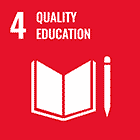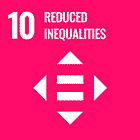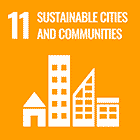Let’s keep in touch!
The latest news of the Metis Fund, delivered straight to your inbox!
Choreographer Irène Tassembédo creates spontaneous performances in public spaces to surprise passersby in their daily lives, evoke emotions, and sometimes, draw them into the dance.



The unexpected dance
Ouagadougou, the capital of Burkina Faso, has grown from 1.5 million to over 2 million inhabitants in less than a decade.
Between population growth and the massive rural exodus of young people, the city could reach 6 million inhabitants by 2030. This process of urbanization, with its extremely rapid demographic and spatial growth, poses multiple development challenges. The city’s growth is accompanied by poverty, difficulties in accessing employment, decent housing, and basic services. Poverty and inequalities lead to phenomena of intolerance and isolation, exacerbating insecurity and the risk of social crisis, all of which hinder development.
Meanwhile, dance, a central part of Burkinabe culture, whether in its traditional forms or the most demanding contemporary creations, has been declining for several years.
In Ouagadougou, the adoption of new lifestyles reduces the time devoted to traditional dance, and religious and social pressures are giving way to less demonstrative forms of expression. The deteriorating security situation, the terrorist threat, and the lack of infrastructure—spaces for training, creation, or distribution—are undermining the possibility of providing artistic education and access to culture for all. Dance is no longer a priority for public authorities or the population. Yet, it remains a powerful vehicle for encounters and social cohesion, crucial to promoting in this context of urban development.
residents from disadvantaged neighborhoods trained in dance
performances
spectators
Burkinabe dancer and choreographer Irène Tassembédo is a major figure in contemporary African dance. Trained in choreography between 1977 and 1980 at Maurice Béjart’s Mudra-Afrique school, she has forged a unique career spanning from choreographic creation to contemporary theater—she regularly collaborates with Matthias Langhoff. She is also a passionate teacher, committed to sharing knowledge: “For me, dance is a commitment, a sharing, an exchange of knowledge!”
With Metis, she creates spontaneous performances in public spaces: in Ouagadougou, streets, marketplaces, bus stations, and solar panel fields become the stage for wandering and all-terrain choreographic interventions. The ambition: to surprise passersby in their daily lives, capture their attention, evoke emotion—and sometimes, draw them into the dance.
Beyond these street performances, Irène Tassembédo trains fifty 100% amateur dancers, residents of the city’s disadvantaged neighborhoods, over several weeks. Together, they mobilize their bodies and perceptions, share their energies, and experiment with their power to act through movement. Then, they perform on stage during five shows at the International Dance Festival of Ouagadougou (FIDO).